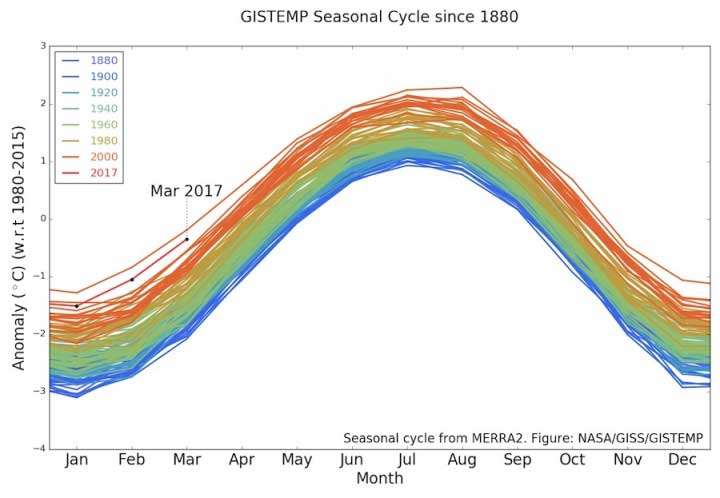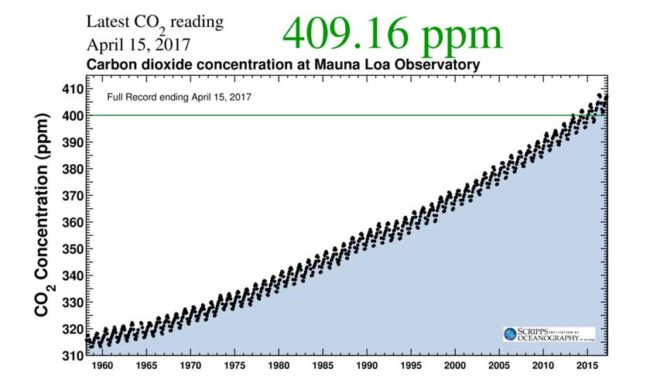For rather a long time, since 1880 to be precise, accurate monthly temperature records have been kept.
2016 saw record breaking months, but that was an El Niño year. Since that has now passed everything now returns back to normal .. right?
So how has 2017 been doing?
To answer that we can turn to ClimateCentral. That is an independent organization of leading scientists and journalists researching and reporting the facts about our changing climate and its impact on the public. They have jumped into the raw numbers from multiple sources, and so here is a summary of the first three months in 2017.
January 2017 Was the Third Warmest on Record Globally …
This January was the third-warmest January on record, according to data released this week from both NASA and the National Oceanic and Atmospheric Administration.
The agencies use different baselines and techniques to measure the Earth’s temperature. NASA’s data shows the planet was 1.7°F above the 1951-1980 average while NOAA’s data indicates the planet was 1.6°F above the 20th century average.
February 2017 Was the Second-Hottest February Globally …
The month was 2°F (1.1°C) above the 1951-1980 average, according to NASA data released Wednesday. That was 0.36°F (0.2°C) lower than February 2016, which ranks as the most anomalously warm month in NASA’s global temperature records, which go back 137 years.
… The continual monthly heat records set in 2016 were fueled partly by a strong El Niño event, which tends to warm global temperatures, though the bulk of the excess heat is due to the human-caused warming of the planet. The second-place finish of this February makes that contribution clearer, as El Niño dissipated last summer and was even followed by a mild La Niña, which tends to cool global temperatures.
We are now in April, so how did March 2017 do?
You can no doubt guess. Here is a graph that tell the on-going story that has been unfolding via the records since 1880 …
March was 2.02°F (1.12°C) warmer than the 1951-1980 average, according to NASA data released Friday. It ranks behind only March 2016, which was 2.29°F (1.27°C) above that same average. NASA’s global temperature records extend back 137 years.
It is factually true to observe that the El Niño event boosted global temperatures. That however was only a small contribution. We know, and have known for quite some time, that the primary factor in play is human caused global warming.
Carbon dioxide levels
CO2 is a greenhouse gas, it traps heat.
In 1750 the quantity of CO2 in the atmosphere of our planet was 280 parts per million.
Today, right now, here is where things stand …
Should we be worried?
Hint: “No” is really not an option.

